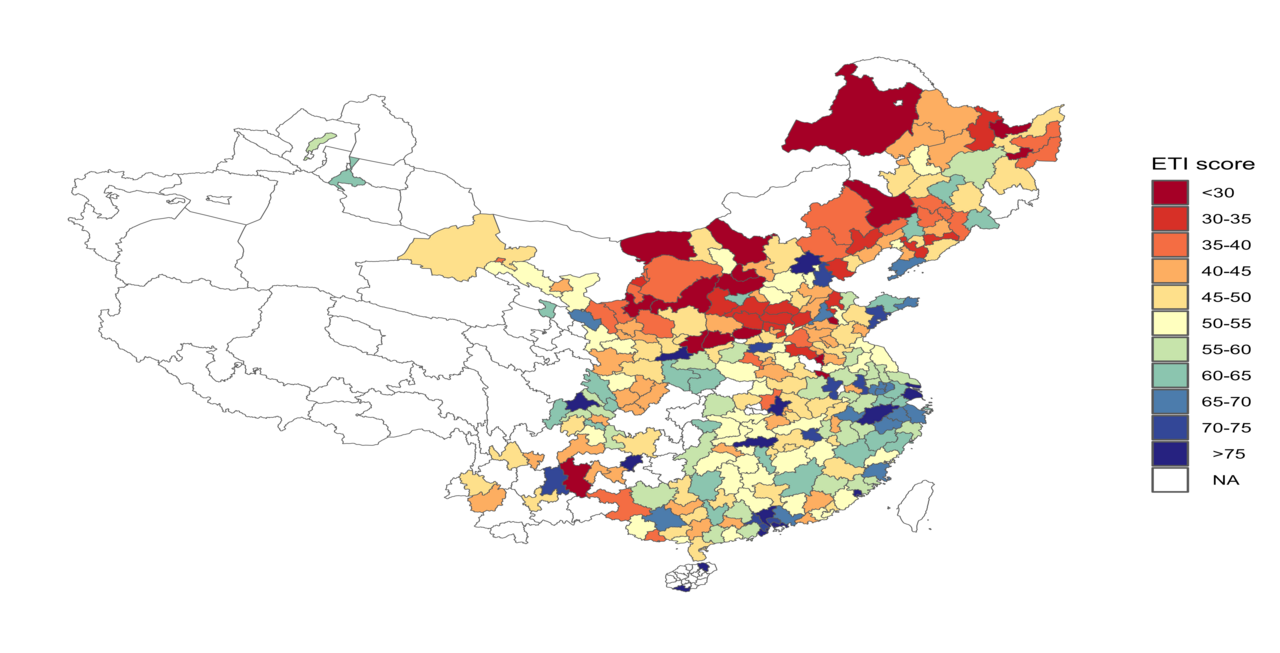City-level energy transition index helps China meet its dual carbon goal
Published in Social Sciences and Earth & Environment

Cities, which consume two-thirds of global energy and contribute to over 70% of global carbon emissions, play a key role in climate change mitigation. Achieving Sustainable Development Goal (SDG) 11, which aims for inclusive, safe, resilient, and sustainable cities, necessitates a successful transition to low-carbon urban energy systems. Understanding the variations among cities and over time can aid in creating targeted and efficient energy transition roadmaps. China, the world's leading carbon emitter with vast regional disparities, requires diversified efforts at sub-national levels. Radical, one-size-fits-all actions, particularly if poorly timed, could result in unjust or unsustainable energy transitions, potentially hindering the achievement of the ambitious "Double Carbon" climate goal of reaching a carbon peak by 2030 and carbon neutrality by 2060.
Tailored actions require a detailed profile of energy transition at the city level, which is yet to be generated for China. Therefore, this study aims to develop a city-level Energy Transition Index (ETI) to measure cities' energy transition progress, focusing on China. Our city-level ETI framework (Figure 1), adapted from the national ETI proposed by the WEF, has been modified to suit the city context in China. The city-level ETI comprises an energy system performance sub-index reflecting the current status of cities' energy systems in terms of energy transition, and a transition readiness sub-index evaluating their socioeconomic capacity for future energy transition. The energy system performance sub-index aggregates eight indicators, while the transition readiness sub-index comprises 25 indicators. Our dataset presents the ETI of 282 Chinese cities from 2003 to 2019. This dataset, along with the two sub-indexes, will be updated annually.

Figure 1. The conceptual framework of city-level energy transition index.
Our city-level ETI and its sub-indexes were constructed in a uniform format. As an example, Figure 2 shows the spatial patterns of 282 cities in the energy transition by presenting the ETI scores in 2003, 2010, and 2019. The data illustrates the compelling trend that China has progressively enhanced its national average ETI score. However, it's important to note that significant regional disparities persist within the country about energy transition. This highlights the heterogeneity among cities and emphasizes the need for city-specific low-carbon roadmaps instead of relying on one-size-fits-all approaches. The cities with the lowest ETI scores are clustered in Northeast and Central China, particularly Shanxi and Inner Mongolia. These regions are the country's main areas for energy (especially coal) production. The heavy dependence on coal and the ordinary performance in socio-economic development make these cities face great challenges in the energy transition. In contrast, more socio-economically developed regions, like Jing-Jin-Ji, Yangtze River Delta, and Pearl River Delta, have the highest ETI scores and above-average energy system performance. The city-by-city analysis of ETI scores also has similar findings. For example, Ordos performed much better than other energy production cities, which is primarily due to its high level of transition readiness. This city’s GDP per capita is among the highest in China, which could support future energy transition with better socioeconomic capacity. This is also in line with the fact that Ordos recently became the center of low-carbon energy in China.

Figure 2. ETI scores for 282 Chinese cities.
The uniformly formatted spatiotemporal ETI data can provide robust support for further analysis of energy transition across different cities and between similar cities, leading to customized roadmaps for Chinese cities. The city-level ETI framework could also be informative for other developing economies, promoting faster energy transition and diversified measures at more detailed levels. This comprehensive panel dataset can be utilized by many other studies that investigate climate change and low-carbon energy transitions. The dataset developed in this paper can be downloaded freely from the website of the International Society for Energy Transition Studies (ISETS, https://isets.org/data) and Figshre (https://doi.org/10.6084/m9.figshare.24563590.v1). Our datasets serve as a comprehensive supplement to the national Energy Transition Index (ETI) provided by the WEF, providing more detailed measures of energy transition at the sub-national level. The dataset provides policymakers with a robust foundation for evidence-based decision-making, allowing them to design and implement targeted policies and strategies to accelerate energy transition in Chinese cities.
Follow the Topic
-
Scientific Data

A peer-reviewed, open-access journal for descriptions of datasets, and research that advances the sharing and reuse of scientific data.
Related Collections
With Collections, you can get published faster and increase your visibility.
Data for crop management
Publishing Model: Open Access
Deadline: Jan 17, 2026
Computed Tomography (CT) Datasets
Publishing Model: Open Access
Deadline: Feb 21, 2026


Please sign in or register for FREE
If you are a registered user on Research Communities by Springer Nature, please sign in